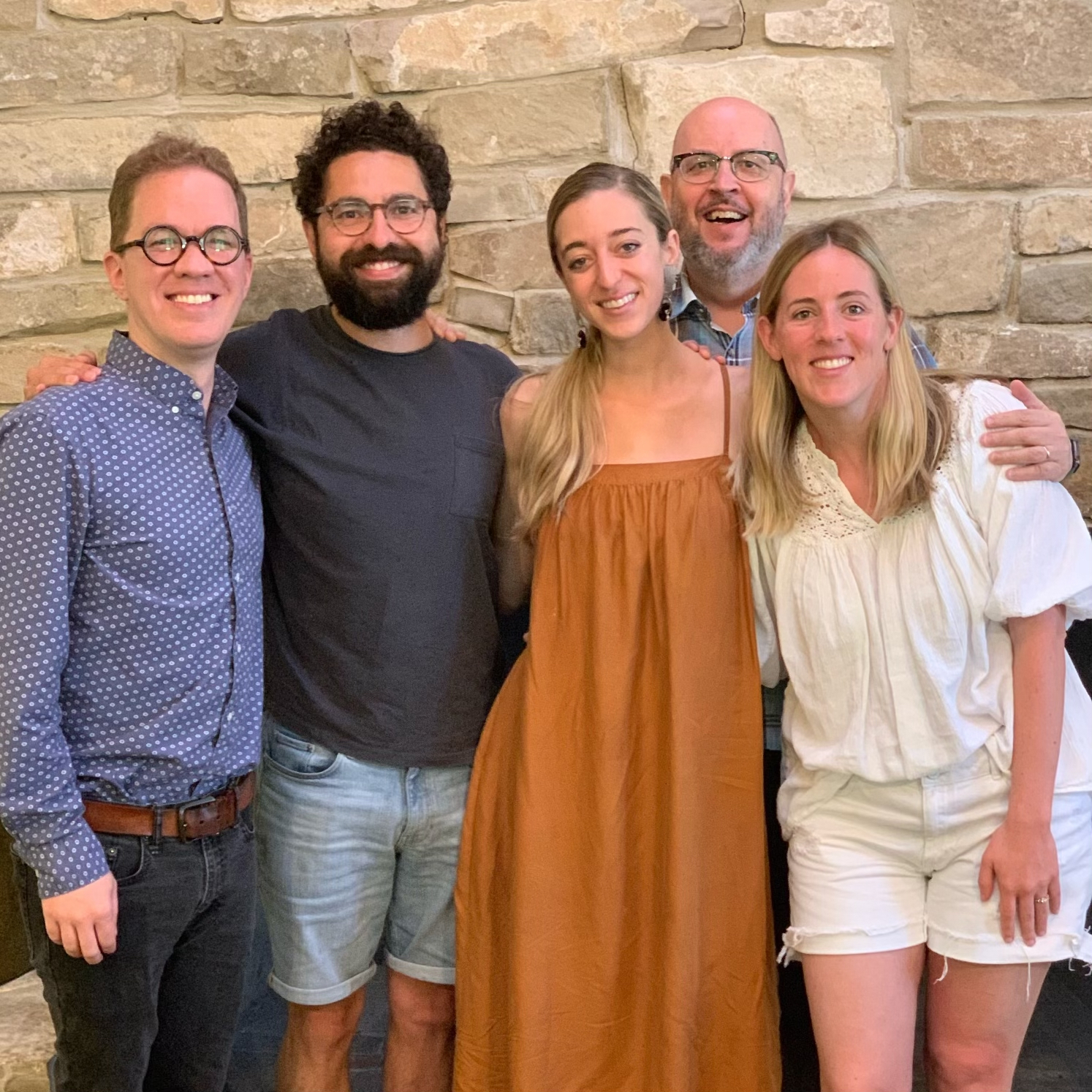good
Sarah Perry is trying to be good: she trained as a vaccinator, sought to help. But being good is hard, and there is a lot of anger about.
This is not to say that we should simply abdicate – toss away the mask, fill our homes with plastic – only to warn against resting easy in our own virtue, assuming malignancy and folly on the part of others. Recently, it has seemed to me that nothing said or done is personal: it is all abstract, representational, showing the colours of a fixed character and tribe. So a man, once wrong, is wrong for ever. He cannot apologise and alter, since that would be nothing but hypocrisy, and he must remain always beyond redemption. This assumption of bad faith has poisoned the public discourse, and caused such deep entrenchment of opposed positions that nobody can hope to see the land. A trench is a comfortable place when the battle’s on, bolstered about by those assuring us of our virtue, and agreeing the unseen enemy is incomprehensibly wicked – certainly I prefer it myself. To take a wider view – to sit, as they say, up on a high horse – is troubling, because here we see the territory, and not the map. From such a vantage we may find our own motives are ignoble, or our position not as wise as we thought, and are available to be shot at from all points. This is a position demanding a kind of subtlety that risks endearing you to nobody – yes, you may say, it is deplorable to protect the economy above lives, but then again a severe and lasting depression may be counted not in pounds and pence, but in vertiginous rises in homelessness, drug dependence, sickness and suicide. Certainly, this is not the flu, but there may come a time when it is something like it; yes, we have to learn to live with it, and there is no life without the risk of death, but living with it may consist of universal basic income, and affordable housing, and so on. Who’d risk expulsion from the trench with these slow negotiations? I blame no one for preferring the sandbags.
On Not Reading the Bible
The title of this post is the title of a book I have, for about twenty years now, thought of writing. My thesis would simply be this: We can do almost anything with the Bible except read it.
It is also true that the Bible, especially the Old Testament, tends to resist interpretation — Erich Auerbach famously illustrates this in his discourse on the story of the binding of Isaac in the first chapter of Mimesis — but that’s not what I am talking about here. But I haven’t yet written the book because I find it difficult to explain precisely what I am talking about.
The Bible has a distinctively protean character; it’s a shape-shifter. That is the result, I think, of its being a book that is also a set of books (books that are themselves often stitched together in peculiar ways). Faced with this shape-shifting, we have a tendency to stand away from it to try to see it whole — at the cost of rendering the details invisible — or to zoom in on the details in a way that causes us to lose sight of the greater narrative arc. The former tendency produces books like Northrop Frye’s The Great Code; the latter tendency leads to people receiving Bible verses as text messages.
I think readers of the Bible are always pulled in both of these directions. We may think that in our moment — the moment of text-messaging and the child of text-messaging, Twitter — we are especially prone to fragmenting the biblical text, but let’s recall that when the Bible was first divided into verses — by Robert Estienne in the mid-16th century — one of the most popular books in Europe was Erasmus’s Adagia. Adages or proverbs then, texts now — the impulse to reduction and condensation is the same.
I don’t think we can address this difficulty by assuming and maintaining some kind of ideal middle distance. That proposed solution arises from the twin assumptions that the protean character of Scripture can and should be arrested. But what if neither of those assumptions is correct? What if the only way genuinely to read Scripture is to engage in a constant zooming in and zooming out?
This model of reading resembles the famous “hermeneutic circle” — understanding the whole in terms of the parts and the parts in terms of (our assumptions about) the whole — but reading and interpretation are not the same thing, even if they are often related.
Heidegger’s famous essay “On the Origin of the Work of Art” — an essay he revised repeatedly, which should tell us something about both the importance and difficulty of the issues involved — describes a version of the hermeneutic circle. In this case, though, he is not discussing the relationship between part and whole but between a work of art and the very concept of “art.”
What art is we should be able to gather from the work. What the work is we can only find out from the nature of art. It is easy to see that we are moving in a circle. The usual understanding demands that this circle be avoided as an offense against logic. It is said that what art is may be gathered from a comparative study of available artworks. But how can we be certain that such a study is really based on artworks unless we know beforehand what art is? Yet the nature of art can as little be derived from higher concepts as from a collection of characteristics of existing artworks. For such a derivation, too, already has in view just those determinations which are sufficient to ensure that what we are offering as works of art are what we already take to be such. The collecting of characteristics from what exists, however, and the derivation from fundamental principles are impossible in exactly the same way and, where practiced, are a self-delusion.I want to think about this passage and return to it later, because I believe it has implications not just for understanding what art is, not just for clarifying the nature of interpretation, but for helping us to read, even read the Bible.So we must move in a circle. This is neither ad hoc nor deficient. To enter upon this path is the strength, and to remain on it the feast of thought — assuming that thinking is a craft. Not only is the main step from work to art, like the step from art to work, a circle, but every individual step that we attempt circles within this circle.
the fault
This is prompted largely by Robin Sloan’s comments on comments.
A decade ago I was active on Twitter, Tumblr, and Pinboard, and wrote a couple of comment-inviting blogs on magazine websites. Now?
- No Twitter
- No Tumblr
- Pinboard bookmarks are set to private
- I blog on my own site, and have comments disabled
- I’m on micro.blog but only post photos
What happened? In a nutshell: I simply got tired of strangers wanting to argue with me. (Also, it was moronic to be that Extremely Online. I don’t know how I got anything else done.) Twitter was, you know, Twitter. Blog comments were generally what one would expect from blog comments, occasionally useful but prone to degenerate into spats. People who followed my Tumblr would write — you couldn’t disable such on-site messaging — to chastise me for signal-boosting something I had just quote-posted. People would email similar chastisements about something I had saved on Pinboard, apparently under the assumption that a bookmark is an endorsement.
Even when I moved to micro.blog, where folks are in general extremely nice, I had to stop posting anything but photos because strangers would invariably show up wanting to argue with me about … well, anything. As though the subject doesn’t matter so much as the act of arguing. I don’t know whether such people feel that argument is a means of sharpening their ideas or whether they just want to be heard, but I keep thinking, Man, does everything have to be subject to disputation? Can I not just put something out there for people to take or leave? Even now that I am blogging without comments, I regularly get emails about my posts, and at least 90% of them are negative. It wears on you after a while. (I continue to believe in the intrinsic value of the blog garden, so the negativity isn’t keeping me away.)
The reigning assumption seems to be that every posted opinion or preference or experience or plain old link is an invitation to debate or refute — that’s what social media, to many people, fundamentally is for: debate and refutation. And as long as that is the reigning assumption, then no platform, it seems to me, can be fundamentally different than all of our other platforms. The fault, dear Brutus, is not in our platforms, but in ourselves, that we are disputatious.
beats me
Over the past ten days I’ve been thinking a good deal about my friend Michael Brendan Dougherty’s essay on responding to vaccine skeptics.
One key claim Michael makes is that “most vaccine skepticism, if by that we mean reluctance, is not based on conspiracy theorizing — it’s based on risk-benefit calculations.” I wonder if that’s true, and how we might know. All I can go by, in the absence of data, is my own experience, and certain elements of my experience with anti-vaxxers are absolutely uniform. Without exception, they tell me that
- The covid pandemic may not be totally made-up, but its dangers are wildly and dramatically overstated by the mainstream media and liberal politicians;
- Covid is no worse than the flu;
- Masking doesn’t help;
- Vaccines don’t work;
- Vaccines are killing more people than covid has.
- They are openly and intensely angry;
- They declaim their beliefs like people reciting a creed, never — and I mean never — asking what my views are or even giving me a chance to state those views should I want to.
For the last forty years I have been interested in our common life in this country, in the ways we live together, and whenever we have experienced pronounced social tension I have had ideas for resolving or at least lessening those tensions. Those ideas have typically been uncommon ones, and I have rarely been under any illusions about the likelihood of their being adopted; but I have nonetheless believed in their likely efficacy. In our current situation I have no idea what to do. I have no tactical suggestions. None. I am totally and absolutely at a loss. It feels like a case of mindslaughter.
UPDATE: Relatedly, I think, this recent speech by Donald Trump:
No more windows in buildings because environment. I always did great with these buildings that the bigger the window, the better I did, the bigger those windows, I wanted floor to ceiling windows, but they say you can’t do that anymore. We don’t want any more windows. It’s going to be real hard to sell apartments, I think. We have a beautiful apartment, and for environmental reasons, we have not put windows in the building. Oh great. Well, that sounds good. These people are crazy. Whatever happened to cows, remember they were going to get rid of all the cows? They stopped that, people didn’t like that. Remember? You know why they were going to get rid of all the cows? People will be next. People will be in there.Tens of millions of Americans hear this man speak and think: He will make America great again. In him we place our full trust. In response to this also, I am totally and absolutely at a loss. I don’t even know where to begin.
So I’ll just talk about other things. Snakes & Ladders will now return to its regular programming — and I’m resuming the newsletter next week!
separate ... but equal?
I don’t want to see politicians get involved in what should and should not be taught. I would like to see parents speak to teachers and administrators when CRT is creating a bad classroom atmosphere. I would like to see teachers and administrators resist the urge to be defensive and resentful toward criticism of CRT.
But I worry that civil discourse around CRT is not going to happen. Instead, parents who most believe in civil discourse will simply pull their children out of public schools, rather than wade into the controversy. Teachers who are not “woke” will be treated as pariahs by other teachers and administrators. Public schools will end up serving the children of parents who are either very progressive or apathetic. There will emerge another school system, a separate but equal school system if you will, for children of parents who are conservatives or old-fashioned liberals.
two questions
After reading Elizabeth Bruenig’s remarkable article on a recent contretemps at Yale Law School — and after resisting the temptation to immediately take a shower and scrub myself clean — I found myself meditating on two questions:
- Did the person Bruenig calls the Archivist believe that by devoting countless hours to investigating and prosecuting two of his classmates he was setting himself up for a high-powered, brilliant career?
- If so, was he right?
So grateful for the time at Laity Lodge with these dear people.

citizens
I’ve just returned from Laity Lodge, where I had a glorious time with my dear friend Wesley Hill: talking about “praying with Jesus”; joyously embracing old friends — including our artist-in-residence Mia Carameros — but also making new friends; worshipping; listening; singing … what a memorable three days it was.
Among the many delights was getting to know Jon and Valerie Guerra, whose music greatly enlivened our time together. A real highlight was the Saturday evening concert, where they gave us a song I want to share with you all. There’s a lovely studio version, but maybe because I heard it live, I’m inclined to post this powerful solo performance by Jon, who gives us in song a prophetic word that I answer with an emphatic Amen:
Every time I’m at Laity Lodge I take pictures of this Japanese maple, because the light is always bouncing off it in different ways.

He likes parsley, I have too much parsley. So we’re cool.

the Campanile of Giotto

John Ruskin, Tracery from the Campanile of Giotto in Florence; in The Seven Lamps of Architecture
tablets
When the iPad came out, more than a decade ago, I tweeted that I didn’t especially want an iPad but would really love an e-ink tablet, one on which I could read books and magazines and PDFs, and then make annotations on them. That didn’t seem very likely at the time, but now some of those devices have been produced, and I recently tried a couple of them.
The first device I bought was a reMarkable tablet, which features
- excellent build quality
- responsive software, especially its handwriting recognition
- very good OCR of handwriting
- reliable syncing
The one problem I had with it turned out to be an insurmountable one. The device has no light of any kind, and the color of the screen is a disconcertingly dark gray; I found the contrast between black type and the gray screen so limited that I couldn’t read anything on the device without strain, except in the very brightest light. It was perfect outdoors, but usable indoors only at my desk, where I could point my desk lamp directly at the screen. So I had to return the reMarkable – with regrets, because it’s a cool device in other respects. I’m sure people with younger eyes than mine can enjoy it.
So after returning the reMarkable, I bought the Kobo Elipsa, which seemed more promising largely because it does have a so-called ComfortLight, which works well. However, that was the only good thing about the device. The build quality is mediocre at best – it feels flimsy – and the software is so unresponsive that I just couldn’t use it. I would tap something on the screen, the software keyboard would either not respond at all or respond only after a delay of several seconds. Writing with the included stylus was painful, so long was the delay between the movement of the stylus and the appearance of text on the screen.
If the reMarkable tablet featured the same lighting that the Elipsa does, I would’ve kept it and been very happy with it. It’s better-designed and better-built.
Finally: both companies make it hard to return their devices. You really have to hunt on the reMarkable website to find the page that tells you how to initiate a return, though once you do find that page the process is relatively straightforward. Kobo, though, doesn’t let you initiate a return without engaging a representative in chat or on the phone. And that’s a very slow process – they seem to be hoping that you will get tired of the delays, give up, and keep the device you don’t really want. When you obscure and complicate the process of returning devices, you make me disinclined to buy anything else from your company.
Shadow Kingdom

An amazing show, but too short. The best versions I’ve ever heard of “Queen Jane Approximately” and “Forever Young” — the latter a tearjerker.
Sant'Andrea al Quirinale

From the Met. Bernini’s Sant’Andrea al Quirinale in Rome is to me the most beautiful of churches. I am reading and thinking about Paradise Lost right now, and I have long thought that Paradise Lost is the Sant’Andrea al Quirinale of poems, and Sant’Andrea al Quirinale the Paradise Lost of churches. Maybe that analogy will make its way into my book.

asymmetrical charity
I mean my title to describe a peculiarity of the current Pope, who speaks often of the need for charity but seems to have little for people he thinks err — or anyway err in a certain direction. Thus his new Motu proprio on the use of the Latin Mass.
Francis is not at the moment completely forbidding the Latin Mass, but only because he finds slow asphyxiation more convenient than summary execution. As he says in his accompanying letter, he wants “to provide for the good of those who are rooted in the previous form of celebration” — but he also insists that these people “need to return in due time to the Roman Rite.” Note the forceful distinction between the Latin Mass and the Roman Rite — there can only be one Roman Rite; the Latin Mass is not a form of it but rather something … different. Indeed, those who adhere to the Latin Mass do not merely depart from the Roman Rite but effectively from the Church itself: they violate the Church’s unity, and “This unity I intend to re-establish throughout the Church of the Roman Rite.” Again: slow asphyxiation. He has not killed the Latin Mass but he intends it to die, and not in the distant future either.
Why? Francis says that “ever more plain in the words and attitudes of many is the close connection between the choice of celebrations according to the liturgical books prior to Vatican Council II and the rejection of the Church and her institutions in the name of what is called the ‘true Church.’” An enormous weight is being placed here on the word “many.” I do not doubt that the attitude describes is held by some. But, for what it’s worth, the Catholics I know who are drawn to the Latin Mass are not drawn to it because it sets them apart from other Catholics but because it binds them to the great cloud of witnesses who have preceded them in their faith. They do not despise their Church but rather love it; the Latin Mass for them is an excellent means of expressing and strengthening that love.
It is sad and strange to me that Francis can be so warm in his sympathy for those who openly reject his Church and its teachings, but so icy-cold, so corrosively skeptical, towards some of that Church’s most faithful sons and daughters. Sad, strange — and, I believe, profoundly unwise.
passing
Freddie deBoer writing about his sense that what Wesley Yang calls the “successor ideology” might be losing momentum:
This could lead to a Great Wokelash, and that could lead to genuinely conservative cultural politics (80%) or a redefined and newly-serious left-wing society (20%). This may very well come to pass. But I think it may be more likely that our elite institutions will just quietly get tired of it and gradually move on, in much the same way as those who spend their adolescence doing yelling social justice activism and then go on to get their MBAs and get less and less strident and eventually just become absentminded flavorless Democrats. There will still be an identitarian left, but it will develop new fixations and likely lose influence. When I was in high school and college Free Tibet and sweatshops were huge concerns with the exact same kind of people as the woke armies now, but you never hear a single word about those causes from the new generation. Politics is faddish. In five years 27 year old passionate midlevel nonprofit workers who yell about CRT for six hours a day will have become overtired soccer moms whose ascendancy to executive positions and executive paychecks inevitably dulls that old fire inside. The new kids will be too busy livestreaming their prescribed ketamine treatments to do all that social justice stuff.
I think this is almost certain to be correct. We as a culture just don’t have what it takes to stick with a set of core convictions for very long — our innate neophilia, or rather neomania, is too strong. Similarly, the hold of Donald Trump upon his worshippers is weakening — it’s not by any means gone, and I wish it were weakening faster, but it will decline year by year, if only because people will crave something new.
It’s almost enough to make you feel sorry for the hatemongers on the left and right alike, who will surely worry a bit that their occupation’s gone, but fear not: The one certainty is that whatever replaces the successor ideology on the left — the successor of the successor ideology, you might say, which is why we need a better term than Yang’s — will be met by shouts from the right that this is The End Of The World As We Know It, and whatever replaces Trumpdom on the right will be met by shouts from the left that this is The End Of The World As We Know It. Some things never change.
Earlier this year we planted this burgundy-leaved crepe (or crape) myrtle and (a) it’s absolutely thriving and (b) it’s utterly gorgeous. 🌱




